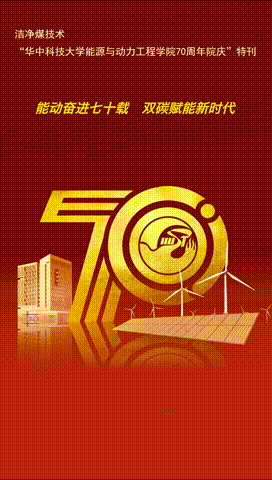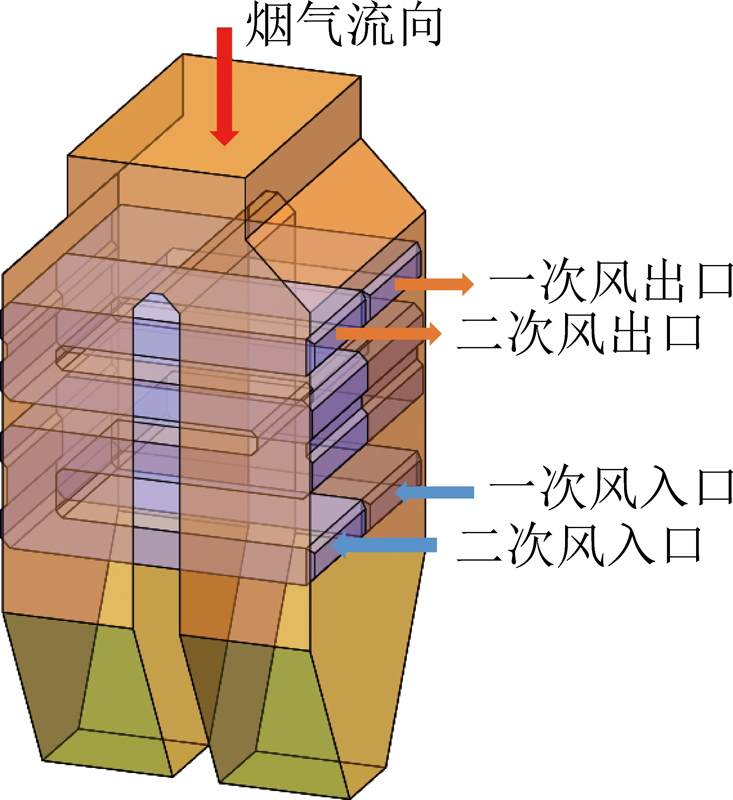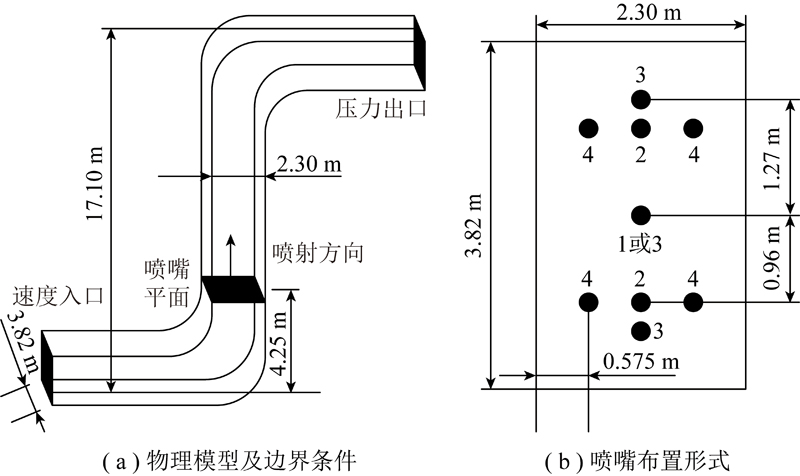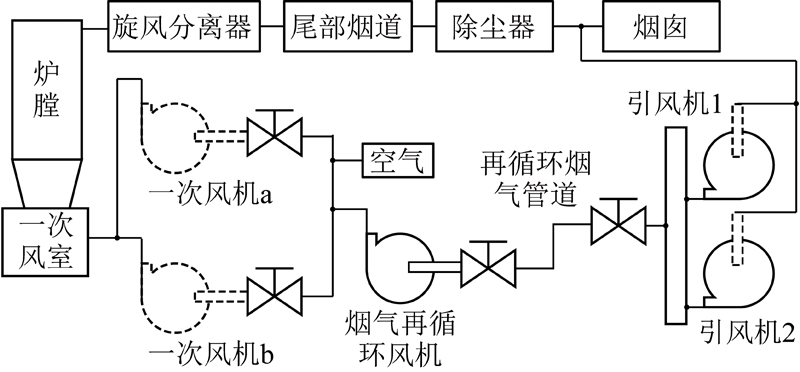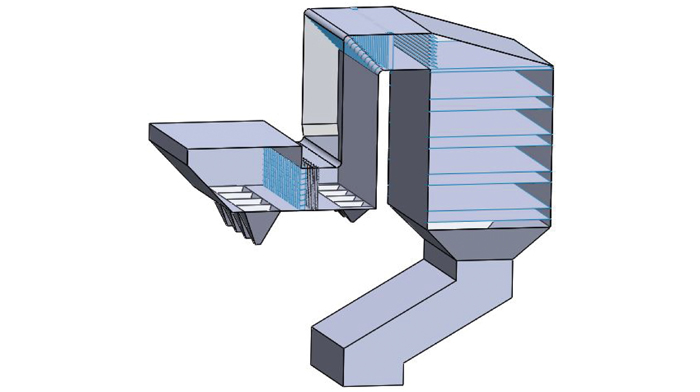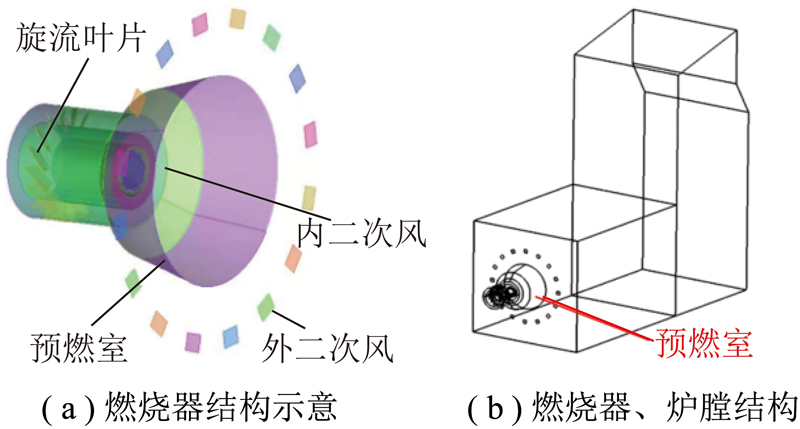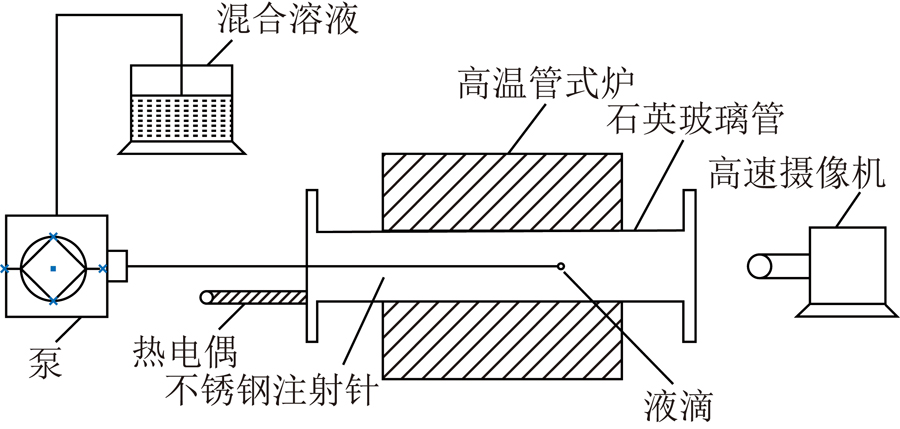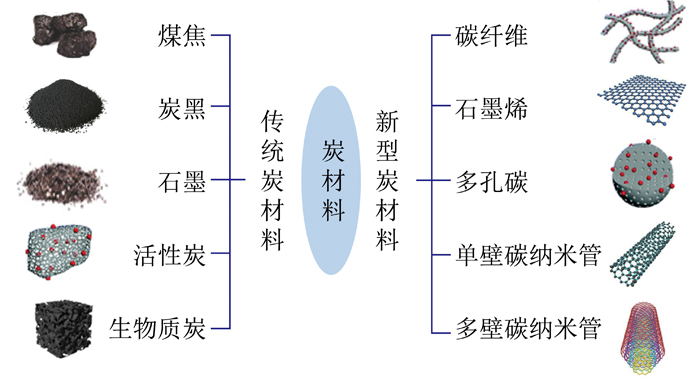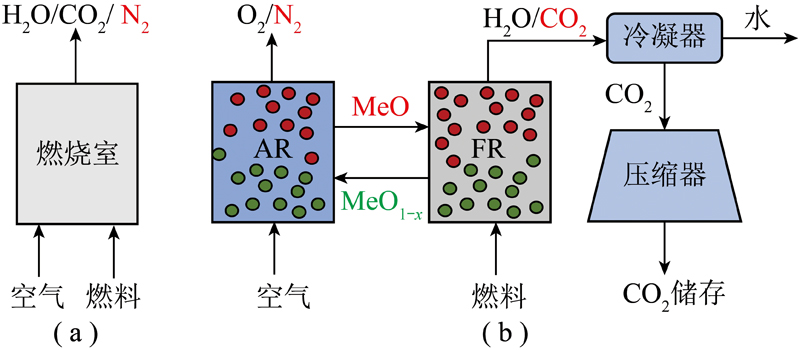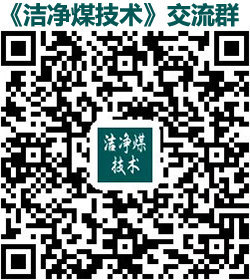多喷嘴脱硫废水烟道蒸发特性模拟分析
0 引 言
火电厂采用石灰石-石膏湿法烟气脱硫技术[1-3]产生大量脱硫废水,其水质成分复杂、易结垢且含有害物质[4-5],常规水质处理技术存在装置结构复杂、Cl-脱除率低、能耗高、经济效益低等劣势[6-7]。目前废水零排放处理,主要分为烟气余热蒸发和蒸发结晶技术[8],其中烟气余热蒸发按引出烟气温度的不同,分为低温烟道蒸发和高温烟道旁路蒸发,其中低温烟道蒸发技术由于成本较低、布置简单、不需额外占地面积等优点[9-12]受广泛关注。
低温烟道蒸发技术是利用空气预热器后的低温烟气蒸发脱硫废水,废液中水分蒸发雾化后,析出废水中未蒸发的细小颗粒,继而被后续除尘器等相关设备收集[13],该技术要求废液在短时间和一定蒸发距离内完全蒸发,否则会出现烟道腐蚀、烟道结垢、除尘器腐蚀或结垢等问题[14]。目前该技术仍不成熟,实际电厂中安装喷嘴进行试验造价较高、便利性差,因此采用数值模拟法分析低温烟道中布置喷嘴时废液蒸发过程。
国内外已对该技术进行了大量数值研究,分析了烟气和液滴性质等对蒸发距离和时间的影响[15-19]。贾翔等[15]以某350 MW机组空预器与除尘器之间的烟道为对象,分析了烟气温度对废水液滴蒸发影响;周川等[16]主要研究了喷嘴喷射方式和液滴粒径对废液蒸发的影响。陆启亮等[17]建立废液烟道蒸发数值模拟平台,发现烟气温度对废液蒸发影响较大。冯书勤等[18]对低温直烟道中的废水蒸发进行分析,发现在较高烟气温度和喷嘴数量2个的情况下,废水蒸发量增加;李德波等[19]研究了脱硫废液在某600 MW机组喷雾干燥塔下的蒸发效果,烟气流量和烟气温度对液滴的蒸发影响较大。
脱硫废水烟道喷射蒸发技术中喷入雾化液滴的喷嘴数量是影响液滴蒸发重要因素,但对于喷嘴数量这一关键参数仍需进一步优化,明确其对蒸发运动过程的影响。
1 脱硫废水雾化蒸发数值模拟
1.1 数学模型
脱硫废水在尾部烟道内运动蒸发,该过程中主要涉及的数学模型有:烟气控制方程、液滴控制方程、液滴和烟气的耦合方程,详细内容见参考文献[20]。
1.2 物理模型及计算条件
脱硫废水在尾部烟道内运动蒸发,针对这一过程进行如下假设[21]:① 烟气为不可压缩性流体;② 忽略烟气粉尘对废水蒸发的影响;③ 喷嘴的空间布置和体积结构不会对尾部流场和烟气温度等参数造成影响;④ 液滴为球形,不考虑液滴间的碰撞影响;⑤ 不考虑液滴和尾部烟道,尾部烟道和外界之间的辐射换热效果;⑥ 液滴粒径为平均粒径。
对某330 MW锅炉尾部烟道进行建模,模型及相关参数如图1(a)所示。将多个雾化喷嘴布置在垂直烟道,且距离下底面高度为4.25 m的平面,该平面内均匀分布1、2、3或4个喷嘴,布置形式如图1(b)所示。

图1 多喷嘴喷雾模型及喷嘴布置形式
Fig.1 Spraying model with multiple nozzles
采用Ansys Fluent 19.1进行模拟计算,烟气入口、出口分别采用速度入口和压力出口边界条件,四周烟道壁面采用绝热、无滑移的壁面条件,压力与速度之间的耦合采用SIMPLE算法,当残差<10-6时,认为计算收敛。在整个计算过程中,总喷水量保持不变,多喷嘴中单个喷嘴的喷水量平均分配,除特殊声明研究相应影响因素的作用外,各参数取值见表1。首先进行网格无关性验证,检验计算的网格能否符合精度的要求,分别选取网格数60.2万、78.8万和98.5万个,网格无关性验证见表2。
表1 操作参数
Table 1 Operational parameter

由表2可知,当网格数分别为78.8万和98.5万个时,各计算结果差距较小。由于计算资源有限,且对模拟结果影响不大,因此选用78.8万个网格进行模拟。
表2 网格无关性验证结果
Table 2 Grid independence verification results

1.3 结果与讨论
计算不同喷嘴数量时液滴蒸发距离与蒸发时间的关系,计算结果如图2所示。由图2可知,随喷嘴数量增加,液滴在烟气中的蒸发时间和距离均减少;

图2 喷嘴数量对液滴轨迹的影响
Fig.2 Effect of nozzle number on droplet trajectory
液滴颗粒向上运动,未出现贴壁现象,相邻喷嘴雾化喷出的液滴很少出现重叠现象。增加喷嘴数量使每个喷嘴在单位时间内雾化的废水液滴质量流量减少,液滴分布更加均匀,蒸发时间减少。
喷嘴数量对烟道烟气温度分布的影响如图3所示,可知雾化液滴在烟气内吸收烟气热量升温蒸发,使各喷嘴上方烟气温度降低,出现低温区域,且低温区域沿烟气流动方向进一步扩大,但各低温区域并未重叠。各喷嘴射入的液滴仅吸收垂直于该喷嘴上方部分烟气的热量,不影响其他喷嘴喷入液滴的吸热过程;喷嘴数量增多,喷嘴上方出现的低温区域增大,但喷嘴上方烟气平均温度升高,最低温度逐渐增大。

图3 喷嘴数量对烟道烟气温度分布的影响
Fig.3 Effect of nozzle number on flue gas temperature distribution
喷嘴数量对喷嘴中轴线温度分布的影响如图4所示,可知多喷嘴时,各喷嘴中轴线温度分布类似。随喷嘴数量增加,流场内最低温度逐渐升高,但最终不同喷嘴数量下的中心轴温度基本相同。流场内最低温度的升高使烟气与雾化液滴之间的平均温差增大,雾滴与烟气之间的对流换热增强,加速了废水雾滴的蒸发。由于脱硫废水的总喷入量一致,最终烟气达到相同温度。

图4 喷嘴数量对喷嘴中轴线温度分布的影响
Fig.4 Effect of the number of nozzle on the temperature distribution in the nozzle axis
不同喷嘴数量时,液滴的质量流量和运动位置随蒸发时间的变化关系如图5所示(图中括号内数值分别表示蒸发时间和蒸发距离)。由图5可知,液滴在烟气中蒸发时,喷嘴数量越多,液滴质量流量降幅越快;液滴运动速度与喷嘴数量几乎没有关系,不同喷嘴数量时,液滴速度几乎相等,蒸发距离与蒸发时间正相关。在操作参数时,双喷嘴比单喷嘴的蒸发时间缩短了0.362 s、39.24%,蒸发距离缩短了3.99 m、40.61%,而4喷嘴比3喷嘴的蒸发时间仅缩短了0.046 s、9.16%,蒸发距离仅缩短了0.40 m、7.34%。

图5 不同喷嘴数下质量流量和液滴位置随时间的变化
Fig.5 Variation of mass flow and position with time at different number of nozzles
2 影响因素分析
2.1 烟气温度的影响
当喷嘴数量分别为1、2、3和4,烟气温度分别为120、150、180、210和240 ℃时,计算液滴的蒸发时间和距离,如图6所示。

图6 烟气温度对蒸发时间及距离的影响
Fig.6 Effect of flue gas temperature on evaporation time and distance
由图6可知,同一喷嘴数量时,烟气温度增加,增大了气液温差,气热换热热流密度增大,进而降低了蒸发时间和蒸发距离;烟气温度相同时,随喷嘴数量的增加,液滴蒸发时间降低、蒸发距离缩短,但蒸发时间和距离降幅减少;烟气温度为180 ℃时,双喷嘴比单喷嘴的蒸发时间缩短了0.253 s、38.3%,蒸发距离缩短了2.49 m、36.0%,而3喷嘴比4喷嘴的蒸发时间仅缩短了0.017 s、4.67%,蒸发距离仅缩短了0.39 m、3.79%。
不同烟气温度和喷嘴数量时,雾化液滴总质量流量与蒸发时间的关系如图7所示。

图7 不同烟气温度下质量流量随蒸发时间的变化关系
Fig.7 Variation of mass flow with evaporation time at different flue gas temperatures
增加喷嘴数量与升高烟气温度均会加速废水液滴总质量流量减少,加剧液滴蒸发,但液滴蒸发速度受烟气温度的影响较大。
2.2 烟气流速的影响
对比不同喷嘴数量下,烟气流速分别为为6、8、10、12和14 m/s时,液滴蒸发时间及蒸发距离的变化特性如图8所示。

图8 烟气流速对蒸发时间及距离的影响
Fig.8 Effect of flue gas flow rates on evaporation time and distance
由图8可知,同一喷嘴数量时,液滴蒸发时间随烟气流速的增加而减小,单喷嘴下的液滴蒸发效果所受影响最大。烟气流速一定时,喷嘴数量越多,液滴蒸发时间减小,但其减小幅度降低。烟气流速为12 m/s时,双喷嘴的蒸发时间为0.525 s,比单喷嘴的蒸发时间0.773 s减少了0.248 s、32.1%,而4喷嘴的蒸发时间0.453 s,比3喷嘴的蒸发时间0.478 s减少了0.025 s、5.11%。
不同烟气流速下蒸发距离随蒸发时间的变化关系如图9所示。液滴的运动速度主要受烟气流速的影响,与喷嘴数量关系不大。单喷嘴时,由于总蒸发时间变动幅度较大,在蒸发时间和烟气速度的共同影响下,随烟气流速增加,蒸发距离先减小后增大,烟气流速为10 m/s时,蒸发距离最短9.85 m;多喷嘴时,液滴蒸发时间变动幅度很小,烟气流速起主导作用,烟气流速增加,液滴所受曳力增大,速度增大,运动距离增大。

图9 不同烟气流速下蒸发距离随蒸发时间的变化关系
Fig.9 Variation of evaporation distance with evaporation time at different flue gas flow rates
2.3 烟气含水量的影响
烟气中水蒸气体积分数分别为0、5%、10%、15%和20%时,计算不同喷嘴数量时液滴蒸发时间和距离,如图10所示。

图10 烟气含水量对蒸发时间及距离的影响
Fig.10 Effect of flue gas vapor contents on evaporation time and distance
由图10可知,相同喷嘴数量时,蒸发时间和蒸发距离随烟气含水量的增加而增大,尤其单喷嘴受烟气含水量影响较大。喷嘴数目为4,烟气含水量从0增至20%时,蒸发时间由0.375 s增至0.544 s,增加了约44.91%,蒸发距离由4.15 m增至5.85 m,增加了约41.0%。单喷嘴时,液滴在烟气含水量由0增至20%时,蒸发时间由0.584 s增至1.051 s, 增加了约80.0%,蒸发距离由6.273 0 m增至11.519 1 m,增加了约83.6%。
烟气含水量相同时,液滴蒸发时间和蒸发距离随喷嘴数目的增多而减少,但随喷嘴增多,降幅减小。烟气含水量为10%时,4喷嘴时的蒸发时间和蒸发距离分别为0.458 s、5.05 m,单喷嘴蒸发时间和蒸发距离分别为0.921 s、9.85 m,蒸发时间和蒸发距离分别缩短了0.463 s和4.80 m,相比此含水量下3喷嘴的蒸发时间0.496 s和蒸发距离5.46 m,则减小了约0.038 s和0.41 m。
2.4 液滴初始平均粒径的影响
液滴初始平均粒径分别为20、50、80、110和140 μm时,不同喷嘴数量下,液滴蒸发时间及蒸发距离的变化特性如图11所示。

图11 液滴初始平均粒径对蒸发时间及距离的影响
Fig.11 Effect of initial average droplet sizes on evaporation time and distance
由图11可知,液滴初始平均粒径对液滴蒸发时间和蒸发距离有较大影响,不同平均粒径下的液滴蒸发趋势相同。4喷嘴时,液滴初始平均粒径由20 μm增大到50 μm时,蒸发时间和蒸发距离分别增加了0.164 s和1.76 m;当液滴初始平均粒径由110 μm增大到140 μm时,蒸发时间和蒸发距离分别增加了0.125 s和1.36 m。不同喷嘴数量时,蒸发时间和蒸发距离随液滴初始粒径的变化趋势一致,蒸发时间和蒸发距离随喷嘴数量的增加而减少,且随喷嘴数量的增加,其减少幅度降低。当液滴粒径为110 μm时,双喷嘴比单喷嘴的蒸发时间减少了0.285 s,蒸发距离减小1.40 m;4喷嘴比3喷嘴的蒸发时间仅减少了0.042 s,蒸发距离仅减少了0.382 m。
不同初始液滴平均粒径下液滴质量流量随蒸发时间的变化如图12所示,可知粒径越小、喷嘴数量越多,液滴质量流量下降越快,液滴蒸发速度越快。相同平均粒径下,喷嘴数量越多,液滴蒸发速度越快,总质量流量降幅增大;喷嘴数量一定时,随平均粒径的增大,液滴蒸发速度减慢,总质量流量下降减慢。液滴粒径决定了液滴比表面积,粒径越小,相对比表面积越大,从而与烟气之间的相对接触面积较大,对流换热效果增强,单位时间内液滴吸收的烟气热量增多,单位时间内蒸发的液滴数目增多。

图12 不同初始液滴平均粒径下液滴质量流量随蒸发时间的变化
Fig.12 Variation of droplet mass flow rate with evaporation time at different initial average droplet sizes
2.5 液滴初始速度的影响
对比不同喷嘴数量下,液滴初始速度分别为5、10、15、20和25 m/s时,液滴蒸发时间及蒸发距离的变化特性,模拟结果如图13所示。

图13 液滴初始速度对蒸发时间及距离的影响
Fig.13 Effect of droplet velocities on evaporation time and distance
由图13可知,同一喷嘴数量时,液滴初始速度的增加使液滴蒸发时间和蒸发距离减小,加强了气液两相之间的扰动,雷诺数增大,对流传热传质效果加强。双喷嘴时,液滴速度由5 m/s增至25 m/s时,液滴蒸发时间由0.642 s降为0.531 s,蒸发距离由6.57 m减至4.45 m。液滴初始速度相同时,随喷嘴数量增多,液滴蒸发时间和距离均减少,但减少的幅度逐渐缩小。当液滴速度为20 m/s时,双喷嘴与单喷嘴相比,蒸发时间减少了0.370 s,蒸发距离减小3.99 m;4喷嘴比3喷嘴的蒸发时间仅减少了0.036 s,蒸发距离减小了0.335 m。
2.6 液滴初始温度的影响
对比不同喷嘴数量下,液滴初始温度分别为30、40、50、60和70 ℃时,液滴蒸发时间及蒸发距离的变化特性,模拟结果如图14所示。

图14 液滴初始温度对蒸发时间及距离的影响
Fig.14 Effect of droplet temperatures on evaporation time and distance
由图14可知,同一喷嘴数量时,液滴初始温度的增加使液滴蒸发时间和蒸发距离减小,且单喷嘴时液滴蒸发时间和蒸发距离降幅最大。随喷嘴数量的增多,液滴蒸发时间和蒸发距离降幅逐渐减小。3喷嘴下,液滴初始温度由30 ℃增至70 ℃时,液滴蒸发时间由0.518 s减为0.475 s,蒸发距离由5.57 m缩至5.36 m。液滴初始温度相同时,液滴的蒸发时间和蒸发距离随着喷嘴数量的增多而缩小,但降幅逐渐减小。当液滴初始温度为60 ℃时,双喷嘴比单喷嘴的蒸发时间减少了0.369 s,蒸发距离减小了3.89 m;4喷嘴比3喷嘴的蒸发时间仅减少了0.05 s,蒸发距离减小了0.39 m。
3 结 论
1)增加尾部烟道内雾化喷嘴数量可使喷出的废水液滴分布更均匀,液滴在烟道上方垂直向上运动,较少向四周扩散;在喷嘴上方出现低温区域,随喷嘴数量增多,低温区域总面积扩大,但不重叠,平均温度和最低温度均升高。
2)烟气和液滴性质相同时,喷嘴数量的增多使雾化液滴蒸发速度加快,蒸发时间和蒸发距离减小,然而喷嘴数量增多对减少蒸发时间、缩短蒸发距离的作用逐渐减弱;液滴运动速度受喷嘴数量影响较小,不同喷嘴数量时,液滴运动速度几乎相等。
3)喷嘴数量相同时,烟气温度升高、含水量降低,液滴平均粒径减少、初始速度和初始温度增加均会增大液滴蒸发速度,蒸发时间减小,蒸发距离缩短。烟气流速增加可减少液滴蒸发时间,但液滴蒸发距离还受喷嘴数量影响。单喷嘴时,蒸发距离先减小后增大,当烟气流速为10 m/s时,蒸发距离最短为9.85 m,多喷嘴时,液滴蒸发距离不断减少。
[1] 白炎武, 刘平元, 陆启亮,等. 脱硫废水烟道蒸发技术蒸发特性实验研究[J]. 动力工程学报, 2019, 39(2): 135-141.
BAI Yanwu, LIU Pingyuan, LU Qiliang, et al. Experimental research on evaporation characteristics of desulfurization wastewater by flue evaporation treatment[J]. Journal of Chinese Society of Power Engineering, 2019, 39(2): 135-141.
[2] 郭志文, 刘军军, 高志佳,等. 新型石灰石湿法烟气脱硫废水处理工艺[J]. 洁净煤技术, 2018, 24(4): 126-130.
GUO Zhiwen,LIU Junjun, GAO Zhijia, et al. Methods to treat waste water from limestone wet flue gas desulfurization in power plant[J]. Clean Coal Technology, 2018, 24(4): 126-130.
[3] 赵东阳, 靳雅娜, 张世秋. 燃煤电厂污染减排成本有效性分析及超低排放政策讨论[J]. 中国环境科学, 2016, 36(9): 2841-2848.
ZHAO Dongyang, JIN Yana, ZHANG Shiqiu. Cost-effectiveness analysis of pollution eemission reductionmeasures and ultra-low emission policies for coal-fired power plants[J]. China Environmental Science, 2016, 36(9):2841-2848.
[4] 马双忱, 柴晋, 贾绍广,等.脱硫废水水质调节对金属腐蚀及高温氯挥发的影响[J]. 动力工程学报, 2018, 38(3): 231-236.
MA Shuangchen, CHAI Jin, JIA Shaoguang,et al. Effects of FGD waste water conditioning on metal corrosion and high-temperature chlorine valorization[J]. Journal of Chinese Society of Power Engineering, 2018,38(3):231-236.
[5] 张娟, 刘平元, 吉顺健,等.燃煤电厂脱硫废水零排放预处理工艺选择与实践[J]. 动力工程学报, 2019, 39(10): 840-846.
ZHANG Juan, LIU Pingyuan, JI Shunjian,et al. Selection and practice of pretreatment process for zero liquid discharge of desulfurization wastewater from coal-fired power plant[J]. Journal of Chinese Society of Power Engineering, 2019, 39(10): 840-846.
[6] TANAKA Y. Irreversible thermodynamics and overall mass transport in ion-exchange membrane electrodialysis[J]. Journal of Membrane Science, 2006, 281(1/2):517-531.
[7] PAKZADEH B. Comparing biological process and evaporation for flue gas desulfurization wastewater treatment[J]. Proceedings of the Water Environment Federation, 2016(11): 3985-4005.
[8] 赵宁, 冯永新, 林廷坤,等.热烟气环境下脱硫废水液滴蒸发特性研究进展[J].化工进展, 2021, 40(8): 4508-4514.
ZHAO Ning, FENG Yongxin, LIN Tingkun, et al. Research progresses on evaporation characteristics of desulfurization wastewater droplets in high-temperature flue gas[J].Progress in Chemical Industry, 2021, 40(8): 4508-4514.
[9] 张语晴. 脱硫废水烟道蒸发数值模拟研究[D]. 北京:华北电力大学, 2018.
[10] 柴晋, 万忠诚, 武凯,等.燃煤电厂脱硫废水烟气蒸发技术进展与应用[J]. 洁净煤技术, 2019, 25(2): 25-31.
CHAI Jin, WAN Zhongcheng, WU Kai, et al.Development and application of flue gas evaporation technology for waste water desulfurization in coal-fired power plants[J]. Clean Coal Technology, 2019, 25(2): 25-31.
[11] 吕武学,于燕飞,曲保忠,等. 燃煤电厂脱硫废水零排放技术现状与发展[J]. 洁净煤技术, 2020, 26(4): 11-20.
LYU Wuxue, YU Yanfei, QU Baozhong, et al. Present situation and development of zero-discharge technology for desulfurization wastewater in coal-fired power plants[J]. Clean Coal Technology, 2020, 26(4): 11-20.
[12] 廖述新, 朱文瑜, 唐复全, 等. 低温烟气余热蒸发脱硫废水工艺研究及工程应用[J]. 洁净煤技术, 2021, 27(6): 200-206.
LIAO Shuxin, ZHU Wenyu, TANG Fuquan, et al. Research and engineering application on evaporation technology of FGD wastewater using low-temperature flue gas[J]. Clean Coal Technology, 2021, 27(6): 200-206.
[13] 马双忱, 于伟静, 贾绍广,等. 燃煤电厂脱硫废水处理技术研究与应用进展[J]. 化工进展, 2016, 35(1): 255-262.
MA Shuangchen, YU Weijing, JIA Shaoguang, et al. Research and application progresses of flue gas desulfurization (FGD) wastewater treatment technologies in coal-fired plants[J]. Progress in Chemical Industry, 2016, 35(1): 255-262.
[14] 谢增孝, 刘洋, 丁钟宇,等.脱硫废水萃取脱氯工作原理与技术分析[J]. 热力发电, 2021, 50(2): 104-109.
XIE Zengxiao, LIU Yang, DING Zhongyu,et al. Working principle and technical analysis of dechlorination through extracting from desulfurization wastewater[J].Thermal Power Generation, 2021, 50(2): 104-109.
[15] 贾翔, 曹蕃, 时红, 等.燃煤电厂脱硫废水烟道物化蒸发数值模拟[J]. 节能, 2020, 39(11): 17-20.
JIA Xiang, CAO Fan, SHI Hong, et al. Numerical simulation of physicochemical evaporation of desulfurization wastewater flue in coal-fired power plant[J]. Energy Conservation, 2020, 39(11): 17-20.
[16] 周川, 吴其荣, 喻江涛,等. 2×350 MW燃煤发电机组主烟道脱硫废水蒸发数值模拟[J]. 环境工程, 2020, 38(5): 96-101.
ZHOU Chuan, WU Qirong, YU Jiangtao, et al. Numerical simulation for FGD wastewater evaporation in the flue duct of a 2×350 MW coal-fired unit[J]. Environmental Engineering, 2020, 38(5): 96-101.
[17] 陆启亮, 张娟, 陈伟,等. 脱硫废水烟道蒸发过程数值模拟研究[J]. 发电设备, 2019, 33(4): 242-247, 251.
LU Qiliang, ZHANG Juan, CHEN Wei, et al. Numerical simulation on the evaporation process of desulfurization wastewater in a flue duct[J]. Power Equipment, 2019, 33(4): 242-247, 251.
[18] 冯书勤, 杜小泽, 杨立军,等. 喷射雾滴烟气流动蒸发特性[J]. 发电技术, 2018, 39(4): 343-353.
FENG Shuqin, DU Xiaoze, YANG Lijun, et al. Evaporation characteristics of atomized droplets sprayed in flue gas flow[J]. Power Generation Technology, 2018, 39(4): 343-353.
[19] 李德波,赵宁,冯永新,等. 脱硫废液雾化蒸发性能的数值研究[J].湖北电力, 2021, 45(1): 96-103.
LI Debo, ZHAO Ning, FENG Yongxin, et al. Numerical study on atomization and evaporation performance of desulfurization waste liquid[J]. Hubei Electric Power, 2021, 45(1): 96-103.
[20] 李恒凡,焦世权,韩中合.脱硫废水烟道蒸发技术的工艺设计[J].洁净煤技术, 2022, 28(9): 154-161.
LI Hengfan, JIAO Shiquan, HAN Zhonghe.Process design for desulfurization wastewater by flue evaporation treatment[J]. Clean Coal Technology, 2022, 28(9): 154-161.
[21] FENG Shuqin,XIAO Liehui,GE Zhihua, et al. Parameter analysis of atomized droplets sprayed evaporation in flue gas flow[J]. International Journal of Heat & Mass Transfer, 2019, 129:936-952.
Simulation analysis of flue evaporation characteristics of desulfurization wastewater with multiple nozzles

移动阅读
JIAO Shiquan,LI Yulong,LI Hengfan,et al.Simulation analysis of flue evaporation characteristics of desulfurization wastewater with multiple nozzles[J].Clean Coal Technology,2022,28(12):102-110.



